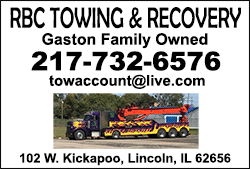|
 The article was written by Andre’ Lanier. And
published earlier this month in The Journal of Emergency Dispatch.
The article defines the history of 911, how it came to be, why and
when. The article was written by Andre’ Lanier. And
published earlier this month in The Journal of Emergency Dispatch.
The article defines the history of 911, how it came to be, why and
when.
Early days of 911
Early discussions for an emergency number originated in 1957 by the
National Association of Fire Chiefs. The chiefs recommended a single
number a person could call to report a fire. However, other
organizations wanted separate numbers for other emergencies.
Discussions on national numbers for emergencies continued until
1967. It was at this time when the President’s Commission on Law
Enforcement and Administration of Justice recommended that a single
national number be established for reporting emergencies. The
commission realized that the public needed a national number that
was short, identifiable, easily remembered, and quickly dialed
whatever the emergency. They selected the three-digit 911.
Alabama State Senator Rankin Fite made the first 911 call in
Haleyville, Alabama (USA), on Feb. 16, 1968. This was followed by a
call in Nome, Alaska (USA), on Feb. 22, 1968.
The White House’s Office of Telecommunications issued a national
policy statement in March 1973. The policy established the Federal
Information Center. The policy recognized the benefits of 911,
encouraged a nationwide adoption of 911, and assisted state and
federal agencies in the planning and the implementation of 911 call
centers.
Today, 911 telecommunicators in 5,806 primary and secondary PSAPs
across the United States answer and dispatch calls over from 650,000
individuals (240 million) annually.

Change over time
The titles given to 911 workers have changed over the years and
these are emergency medical (fire and police) dispatchers,
dispatchers, 911 operators, and telecommunicators. They are
considered the “first, first responder.” By definition, the Bureau
of Labor Statistics states that the position involves handling calls
while operating the radio, telephone, and computer equipment at the
emergency communications center and receiving reports from the
public about disturbances, crimes, medical issues, fire, and police
emergencies. The 911 telecommunicator relays that information to
emergency personnel (fire, police, and rescue first responders) and
may maintain contact with the caller until emergency personnel
arrive on the scene.
Like most organizations, the PSAP must look to the
horizon for changes happening with technology and people. Most call
taking systems are computer-driven with interactive maps and global
positioning systems. Advances in medical procedures and technology
have steadily improved with each passing year. These advances have
allowed faster medical attention through the Protocols developed by
the International Academies of Emergency Dispatch™ (IAED®) used in
PSAPs.
In 2013, Gardett et al. wrote that thirty years ago,
medical dispatching was considered the “weak link” in the chain of
prehospital care. Emergency medical dispatchers (EMDs, currently
known as 911 telecommunicators) were largely untrained laypeople who
simply collected an address, phone number, and complaint information
and sent an ambulance to every call.
[to top of second column] |

This is no longer the case. The use of scripted,
medically-approved protocols is now the standard of practice for certified EMDs,
who use such protocols to accurately and efficiently prioritize and triage calls
by categorizing patients into high, moderate, low, and nonemergency acuity
levels.

From the humble beginnings in Alabama, emergency communication centers provide
911 coverage to 96% of the U.S. population. A 911 telecommunicator is the voice
behind emergencies, doing their jobs every day to save lives.
[Source: https://iaedjournal.org/past-present-more-to-come/]
Today’s final 911 helpful hint comes from telecommunicator
Shannon Harris

Shannon Harris
No Power, no problem, contact your power company directly.
However, if you see downed lines do not approach them and contact 911
immediately.
Low hanging lines and lines with heavy debris, such as tree limbs, hanging on
them should be reported to 911 as soon as possible. If there is tree debris in a
roadway that is hazardous to travelers, that should be reported to 911.

If it is not an emergency situation, you can call a non-emergency number to
report the issue. During major storm events, the local EMA office may open their
Emergency Communications Center to assist Logan Dispatch with non-emergency
issues while 911 resources are tied up. So, do not worry about calling us, we
are always here to assist you. |